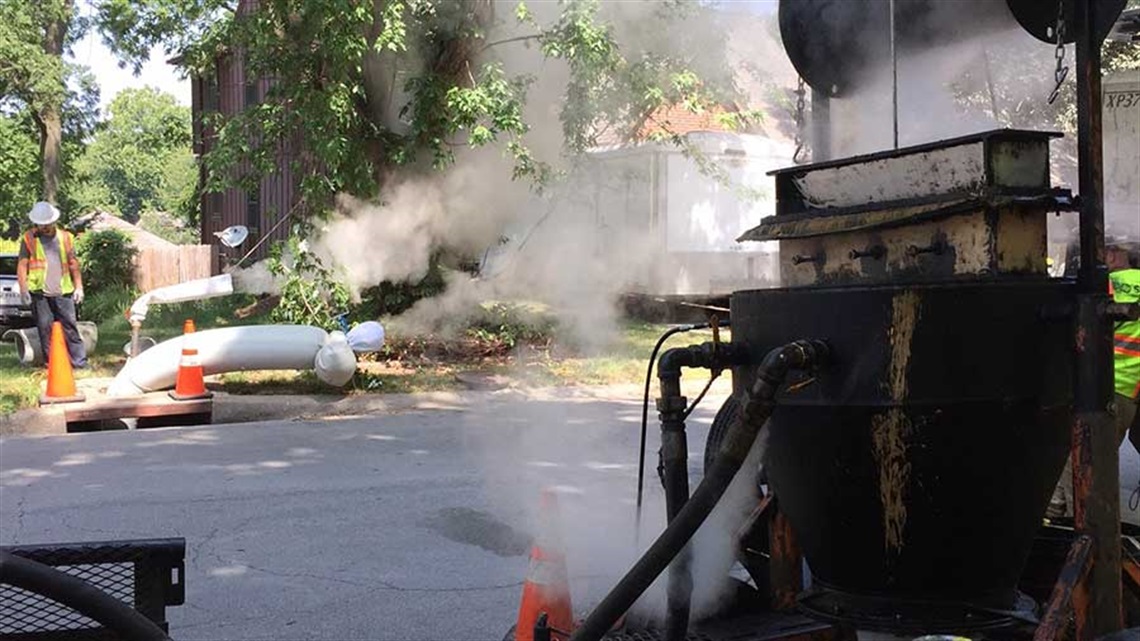Pipe Relining

Corrugated metal was commonly used to make stormwater pipes decades ago, but it corrodes more easily than modern pipe materials. Much of this pipe in Lenexa is in need of rehabilitation or replacement to avoid flooding and drainage problems.
If the pipe is beyond repair or too small, it must be replaced. When possible in areas that run under the road, close to utility lines or near heavily landscaped areas, we use a less-intrusive process called cured-in-place pipe lining.
In the cured-in-place pipe lining process, a long tube-shaped bag made of resin and fabric is inserted into the damaged area of pipe and filled with steam. The steam expands the bag to line the interior of the pipe. When it cools, the resin in the bag hardens and creates a liner along the surface of the damaged pipe.
Mitigating resin odors
The resin used in the pipe liner is made with styrene, which can cause an epoxy-like smell. Crews make sure the amount of styrene used is below health risk levels to protect both homeowners and the workers installing the pipe liner. Stormwater pipes are not directly connected to your home like sanitary sewer pipes, so it is rare for any of the styrene odor to enter your home. However, it does happen on occasion, and even a small amount of styrene can cause strong odors.
Some people may be more sensitive to these odors and develop symptoms such as headache, nausea, dizziness, and lightheadedness. These symptoms will likely go away after the exposure ends and the person can get some fresh air. If you start experiencing these symptoms, try to seek fresh air promptly.
If you experience odor in your home after a pipe near you house is lined, here are some tips to eliminate the odor:
- Open windows to air out the affected area
- Pour water in your basement floor drain to assure that your trap is full.
- Run your exhaust fans until the odor dissipates.
If after trying these things the odor persists, the City’s contractor is happy to come out and investigate further.
Considering environmental impacts
We’ve received questions about the overall environmental impact of using a process like cured-in-place pipe lining. The City is also concerned about the environment and does consider these potential impacts when making decisions regarding storm sewer replacements.
The obvious alternative is to replace the pipe, but this is not without its own environmental costs. The excavation process produces much greenhouse gas and often results in removal of mature trees; again, negatively affecting the environment.
There are a couple of other technologies available, and even a promising alternative to steam-curing the styrene coated liners. The City has tried or is planning to try all of the alternatives in an attempt to find the best solution; but, to date, our experiences have not resulted in a satisfactory finished product.